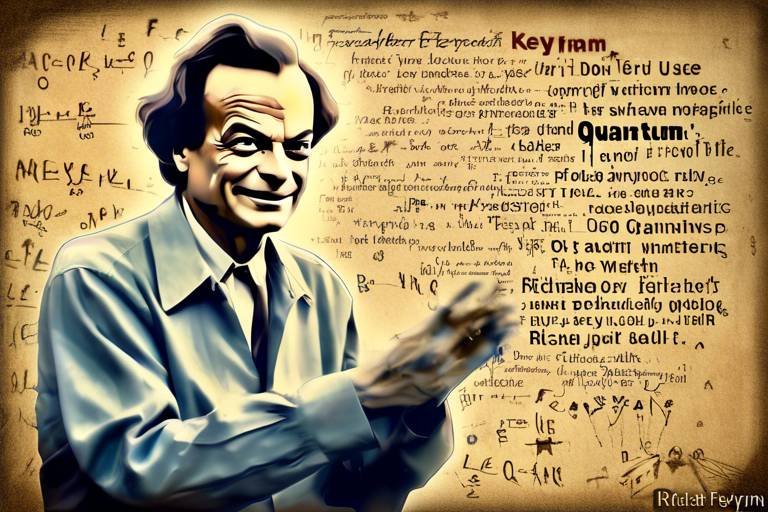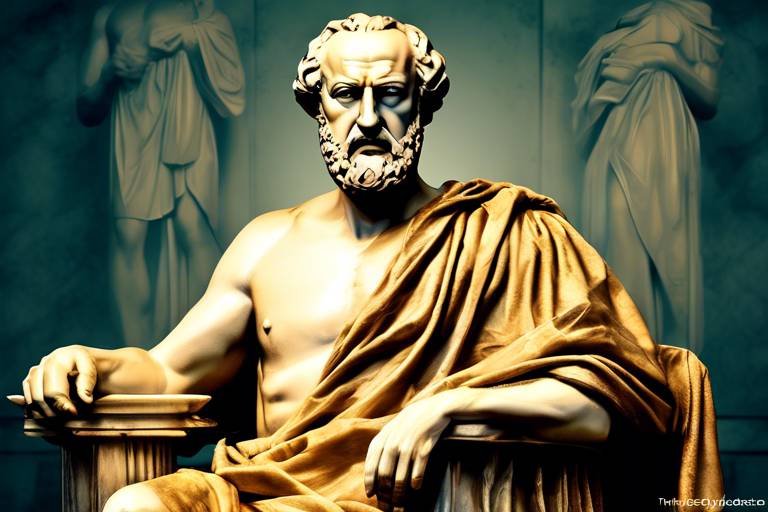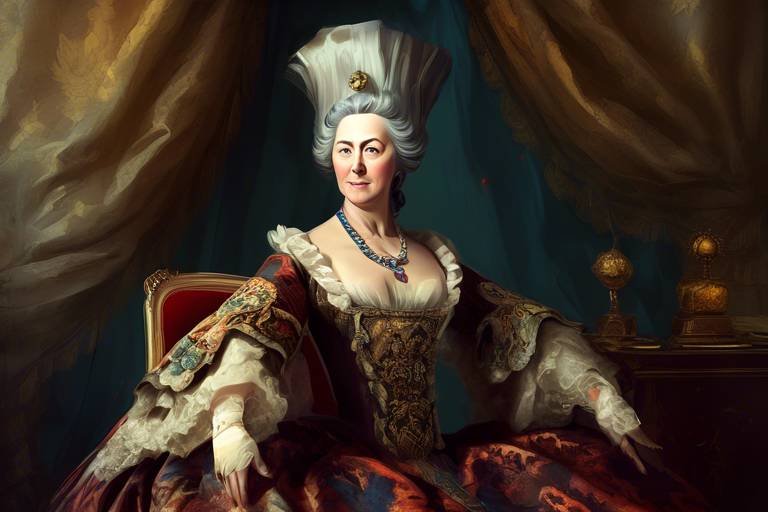Richard Feynman: The Key to Quantum Mechanics
Richard Feynman, a brilliant physicist, is often regarded as the key to unlocking the mysteries of quantum mechanics. His unique approach and profound insights have reshaped our understanding of the quantum world, leaving a lasting impact on the field of physics.
From his early years to his groundbreaking contributions, Feynman's journey is a testament to his relentless pursuit of knowledge and innovation. His work continues to inspire and educate scientists and enthusiasts worldwide, cementing his legacy as a pioneer in quantum mechanics.

Early Life and Education
Richard Feynman, a renowned physicist, is celebrated for his groundbreaking contributions to the field of quantum mechanics. His unique approach and insights have revolutionized our understanding of the quantum world, leaving an indelible mark on the realm of theoretical physics.
Richard Feynman's journey into the world of physics began with his upbringing and early education. Born in 1918 in New York City, Feynman showed an early aptitude for mathematics and science. His academic prowess led him to pursue studies at the Massachusetts Institute of Technology (MIT) and later at Princeton University, where he delved deeper into the mysteries of the universe.
During his formative years, Feynman was influenced by his father's love for science and his experiences tinkering with radios, laying the foundation for his future explorations in physics. These early influences sparked Feynman's curiosity and set him on a path towards unraveling the complexities of the quantum world.
One of the defining moments in Feynman's academic journey was his time at Princeton, where he encountered renowned physicists such as John Archibald Wheeler. Under Wheeler's mentorship, Feynman honed his analytical skills and developed a keen interest in quantum mechanics, laying the groundwork for his future groundbreaking work in the field.
As Feynman immersed himself in the world of theoretical physics, he embarked on a quest to unlock the secrets of the quantum realm. His insatiable curiosity and innovative thinking propelled him towards a series of discoveries that would reshape the landscape of modern physics.
Stay tuned for some common questions about Richard Feynman and his contributions to quantum mechanics!

Path to Quantum Mechanics
Richard Feynman's path to quantum mechanics was paved with curiosity, determination, and a relentless pursuit of understanding the fundamental nature of the universe. Born in 1918, Feynman's early years were marked by a keen interest in science and mathematics, setting the stage for his future achievements in the field of physics.
After studying at the Massachusetts Institute of Technology (MIT) and Princeton University, Feynman embarked on a journey that would lead him to the forefront of quantum mechanics. His experiences working on the Manhattan Project during World War II exposed him to the complexities of nuclear physics and ignited his passion for unraveling the mysteries of the quantum world.
One of Feynman's most significant contributions to quantum mechanics was the development of the path integral formulation, a groundbreaking approach that revolutionized how physicists approach quantum phenomena. This innovative method provided a new perspective on the behavior of particles at the quantum level, offering a more intuitive way to understand complex interactions.
Throughout his career, Feynman encountered numerous challenges and obstacles in his quest to unravel the secrets of quantum mechanics. His unconventional thinking and creative problem-solving skills allowed him to overcome these hurdles and propose novel solutions that pushed the boundaries of the field.
By delving into the intricacies of quantum mechanics, Feynman was able to uncover hidden patterns and relationships that transformed our understanding of the fundamental forces governing the universe. His insights continue to inspire generations of physicists and shape the way we approach the complexities of the quantum world.

Feynman Diagrams
Feynman diagrams are a powerful tool in the realm of quantum field theory, offering a visual representation of the complex interactions between particles at the quantum level. These diagrams, introduced by Richard Feynman in the 1940s, provide a way to simplify and calculate the probabilities of various particle interactions. By assigning specific lines and vertices to particles and their interactions, Feynman diagrams enable physicists to visualize and analyze intricate processes that would otherwise be challenging to comprehend.
Each component of a Feynman diagram carries significant meaning, with lines representing particles traveling through space and time, and vertices indicating points of interaction or particle emission and absorption. By carefully constructing and interpreting these diagrams, physicists can gain insights into the behavior of particles, the exchange of forces, and the probabilities of different outcomes in quantum mechanical systems.
One of the key advantages of Feynman diagrams is their ability to simplify complex calculations in quantum field theory. By translating intricate mathematical expressions into graphical representations, physicists can more easily manipulate and analyze the interactions between particles. This visual approach not only aids in understanding the fundamental processes at play but also facilitates the development of new theoretical frameworks and predictions in the field of quantum mechanics.
Moreover, Feynman diagrams have become a fundamental tool in theoretical physics, playing a crucial role in the study of particle physics, quantum electrodynamics, and quantum chromodynamics. These diagrams have revolutionized the way physicists approach calculations and conceptualize particle interactions, paving the way for significant advancements in our understanding of the quantum world.

Quantum Electrodynamics
Quantum Electrodynamics, often referred to as QED, is a field of physics that delves into the interactions between light and matter at the quantum level. Richard Feynman made significant contributions to this area of study, revolutionizing our understanding of fundamental forces. One of his key achievements was the development of a mathematical framework that elegantly described the behavior of electromagnetic interactions in terms of quantum particles.
By introducing innovative mathematical techniques and conceptual insights, Feynman transformed the way physicists approached quantum electrodynamics. His approach, which involved calculating probabilities of various particle interactions, laid the foundation for modern quantum field theory. Feynman's work in this field not only provided a deeper understanding of the underlying principles governing light and matter interactions but also paved the way for further advancements in theoretical physics.
One of the most remarkable aspects of Feynman's contributions to quantum electrodynamics was his development of Feynman diagrams. These graphical representations allowed physicists to visualize and calculate complex particle interactions with unprecedented ease. By assigning specific rules to these diagrams, Feynman provided a powerful tool for simplifying calculations in quantum mechanics, leading to more accurate predictions and a deeper insight into the quantum world.
Furthermore, Feynman's work in quantum electrodynamics played a crucial role in unifying quantum theory with special relativity, laying the groundwork for the broader field of quantum field theory. His insights into the behavior of particles and fields at the quantum level have had a lasting impact on the field of theoretical physics, influencing generations of scientists and shaping our current understanding of the universe.

Legacy and Influence
Richard Feynman's legacy and influence in the field of physics are unparalleled, leaving an indelible mark on the scientific community. His innovative approach to problem-solving and unique insights continue to inspire generations of physicists and researchers worldwide.
One of Feynman's most significant contributions was his teaching methods, which emphasized a deep understanding of concepts rather than rote memorization. His lectures and books, such as the famous "Lectures on Physics," have become foundational texts in physics education, known for their clarity and engaging style.
Furthermore, Feynman's work in quantum mechanics and quantum electrodynamics has had a lasting impact on theoretical physics. His development of the path integral formulation and Feynman diagrams revolutionized the way physicists visualize and calculate complex particle interactions, leading to significant advancements in the field.
In addition to his scientific contributions, Feynman's charismatic personality and passion for learning have made him a beloved figure in popular culture. References to Feynman can be found in various forms of media, from books and movies to music and art, showcasing his widespread influence beyond the scientific community.
Moreover, Feynman's ideas and principles continue to shape modern physics, guiding current research efforts in quantum mechanics. His emphasis on simplicity and elegance in theoretical frameworks has inspired new approaches to understanding the fundamental forces of the universe, ensuring that his legacy endures in the ongoing quest for knowledge.

Quantum Computing
Quantum computing represents a revolutionary approach to processing information by harnessing the principles of quantum mechanics. Richard Feynman's work in quantum mechanics laid the foundation for the development of quantum computing, opening up new possibilities for solving complex problems that are beyond the capabilities of classical computers. In traditional computing, data is processed in binary form using bits, which can exist in a state of either 0 or 1. However, quantum computers utilize quantum bits, or qubits, which can exist in a superposition of states, allowing for parallel computation and the potential to solve problems at an exponential speed.
One of the key concepts in quantum computing is quantum superposition, where qubits can exist in multiple states simultaneously. This property enables quantum computers to perform calculations on a massive scale and explore multiple solutions at once. Additionally, quantum entanglement, a phenomenon where qubits become interconnected and their states are correlated, allows for the creation of powerful quantum algorithms that can outperform classical algorithms in certain tasks.
Quantum computing holds the promise of transforming various fields, including cryptography, drug discovery, optimization problems, and artificial intelligence. By leveraging the principles of quantum mechanics, quantum computers have the potential to revolutionize industries and drive innovation in ways previously thought impossible. Researchers and scientists continue to explore the capabilities of quantum computing and work towards overcoming the challenges associated with building practical quantum systems.

Popular Culture References
Richard Feynman, with his charismatic personality and groundbreaking contributions to physics, has left a lasting impact on popular culture. His life and work have been depicted in various forms of media, including books, movies, and even music.
In the book "Surely You're Joking, Mr. Feynman!" by Ralph Leighton, readers get a glimpse into Feynman's adventurous spirit and unconventional approach to science. The book captures his sense of humor and curiosity, making it a must-read for those interested in his life.
One of the most notable portrayals of Feynman on screen is in the TV series "The Big Bang Theory." The character Sheldon Cooper often references Feynman's work and quotes him, showcasing the physicist's influence on modern pop culture.
Furthermore, Feynman's famous lectures, such as the "Feynman Lectures on Physics," have inspired musicians like They Might Be Giants, who dedicated a song titled "Meet James Ensor" to him. This demonstrates how his legacy transcends the scientific community and resonates with artists and creators.
Overall, Richard Feynman's impact on popular culture serves as a testament to his enduring legacy and the universal appeal of his ideas and personality.

Continued Relevance in Modern Physics
Richard Feynman's work in quantum mechanics continues to be highly relevant in modern physics, shaping our understanding of the fundamental principles governing the quantum world. His innovative approaches and insights have paved the way for significant advancements in various areas of theoretical and experimental physics.
One key aspect of Feynman's legacy is his contribution to quantum computing. By exploring the potential of quantum mechanics in information processing, he laid the groundwork for the development of quantum algorithms and the realization of quantum computers. Today, researchers are building upon his ideas to create powerful computing systems with the potential to revolutionize technology.
Furthermore, Feynman's work in quantum electrodynamics remains a cornerstone of modern theoretical physics. His mathematical techniques and conceptual frameworks have provided a deeper understanding of the interactions between light and matter at the quantum level, influencing ongoing research in particle physics and quantum field theory.
Moreover, Feynman's teaching methods and communication style continue to inspire and educate scientists and students worldwide. His emphasis on clear explanations, intuitive reasoning, and hands-on learning has had a lasting impact on the way physics is taught and understood, ensuring that his legacy endures in the next generation of physicists.
In the ever-evolving landscape of modern physics, Feynman's work serves as a guiding light, offering insights and perspectives that continue to shape the direction of research and exploration in quantum mechanics. His ideas remain a source of inspiration for physicists and researchers seeking to unlock the mysteries of the quantum world and push the boundaries of scientific knowledge.
Frequently Asked Questions
- What were Richard Feynman's major contributions to quantum mechanics?
Richard Feynman made significant contributions to quantum mechanics, including his development of the path integral formulation, his work on quantum electrodynamics, and the introduction of Feynman diagrams. These contributions revolutionized the field and continue to influence modern physics.
- How did Richard Feynman's work impact quantum computing?
Feynman's insights into quantum mechanics laid the foundation for the development of quantum computing. His ideas inspired the creation of powerful quantum algorithms, showcasing the potential of quantum computers to solve complex problems that are infeasible for classical computers.
- What is the legacy of Richard Feynman in modern physics?
Richard Feynman's legacy in modern physics is profound, with his work continuing to shape the way we understand the quantum world. His teaching methods, books, and lectures have inspired countless scientists, and his contributions to quantum mechanics remain relevant in ongoing research and technological advancements.



















